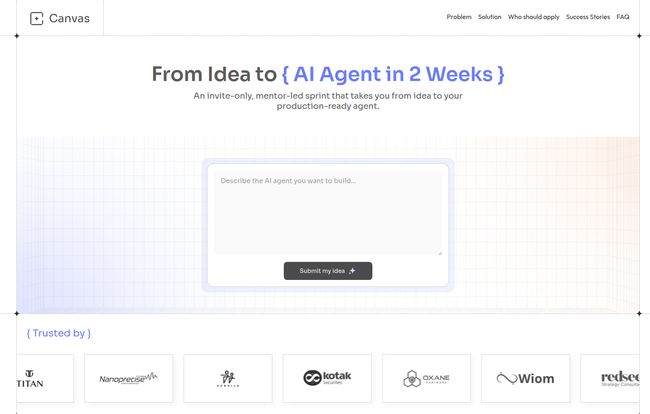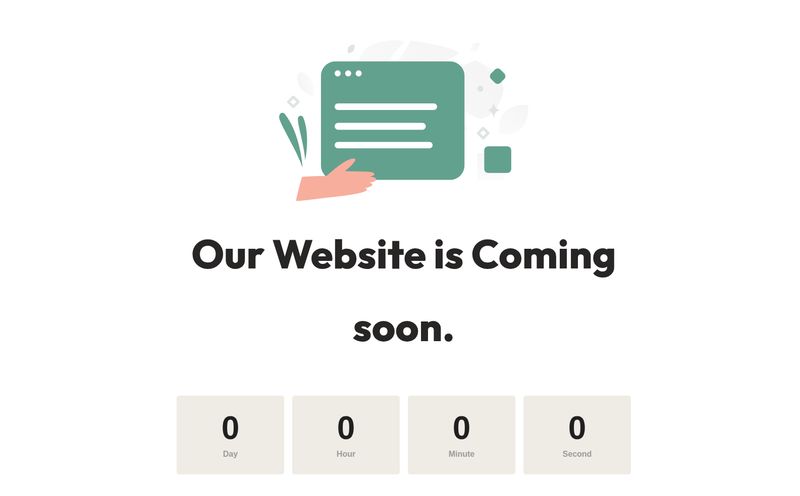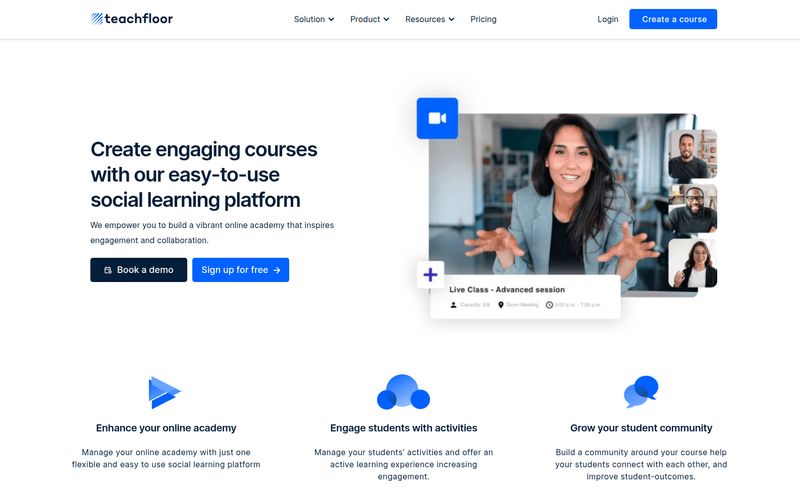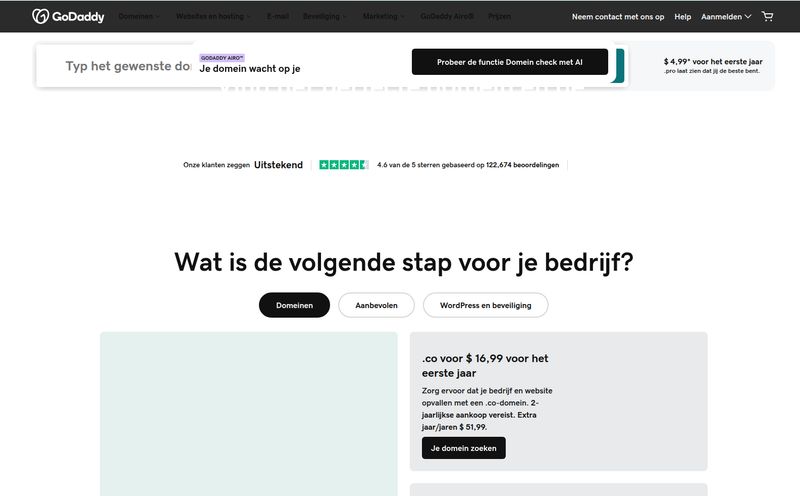We all have one. Don't we? That digital graveyard of half-baked ideas and brilliant-in-the-shower concepts. For me, it’s a Trello board titled “Someday/Maybe.” For you, it might be a folder of Google Docs or a forgotten notebook. And lately, that graveyard has been filling up with AI-powered ideas. An agent to automate my client reporting. A smart tool to sort through SEO data. An internal bot to answer the same three questions my team asks every. single. day.
The ideas are great. The execution? Well, that's where things get sticky. You're either a founder who doesn't have an engineering team on speed dial, a product manager trying to spec out something you don't fully understand, or a solo creator who gets stuck in a loop of YouTube tutorials. It's what the folks at Canvas call “Technical Paralysis,” and it’s a real dream-killer.
So when I came across the Canvas Builders Program, which promises to take you from a rough idea to a live, production-ready AI agent in just two weeks, my inner skeptic raised an eyebrow. Two weeks? Really? In an industry drowning in hype, that’s a bold claim. But I decided to dig in, and what I found was... surprisingly practical. Let's get into it.
So, What Exactly is This Canvas Builders Program?
First off, let’s be clear what this isn’t. It’s not another passive, watch-a-bunch-of-videos online course you’ll never finish. And it’s not an agency that will build your stuff for you while you sip a latte.
Think of the Canvas Builders Program as a YC-style build sprint for your AI idea. It’s an intense, two-week, mentor-led program where you get your hands dirty and actually build the thing. It’s designed specifically for founders, solopreneurs, and product managers who are comfortable with APIs or no-code tools but don't necessarily have a deep background in AI or coding. It’s about bridging that terrifying chasm between a great concept and a working product that people can actually use.
The whole program is built to solve four big problems they've identified:
- Unclear Vision: You have an idea, but it's fuzzy.
- Technical Paralysis: You don't know which LLM, framework, or stack to use.
- The Production Gap: You've built a demo, but getting it live and scalable is a whole other beast.
- Feedback Vacuum: You ship something but have no idea if it's actually working or how to improve it.
The 2-Week Sprint: A Breakdown of the “Canvas Path”
The magic, supposedly, happens over a very structured 14-day period. It's not just a free-for-all; it's a guided path. And I gotta say, I appreciate the structure.
Week 1: Laying the Foundation (Formulate & Learn)
The first few days are all about sharpening your idea. You’ll use their framework to turn a vague concept into a concrete, measurable objective. This is the part everyone wants to skip, but it’s probably the most important. A fuzzy goal leads to a fuzzy product. Simple as that.
Then, you get a crash course in the essentials. We're talking LLMs, RAG (Retrieval-Augmented Generation), Tool Calling, and Agentic design patterns. It’s not an academic lecture; it’s a need-to-know download of the building blocks you’ll be using in week two. They give you just enough theory to be dangerous.
Week 2: Getting Your Hands Dirty (Build & Improve)
This is where the rubber meets the road. You’ll spend days 7-10 in hands-on building sessions, turning your well-defined objective into your first agent on the Canvas platform. You ship it. You make it live. It’s a real thing in the world. The momentum from this alone is a huge psychological win.

Visit Canvas Builders Program
But it doesn't stop there. The last few days are about improving and evolving your agent based on actual usage. This is another area where so many projects die. Getting to v1 is one thing; knowing how to get to v2 is another. This focus on the full lifecycle is, in my opinion, a massive differentiator.
Who Should Actually Apply (And Who Shouldn't)
This program has a very specific “Ideal Builder” in mind, and I respect the clarity. It’s invite-only for a reason.
This is probably for you if:
- You're a founder, PM, or solopreneur with a specific AI problem to solve.
- You're a doer. You'd rather spend an hour building than an hour watching a video about building.
- You're comfortable with no-code tools like Zapier or have a basic understanding of what an API is. You don't need to be a Python wiz.
- You can commit about 6 hours a week for two weeks. It's a sprint, not a marathon.
On the other hand, you might want to sit this one out if:
- You just need a basic FAQ chatbot for your website. This is overkill for that.
- You're looking for a completely passive learning experience.
- You want a “done-for-you” agency to handle everything. No shame in that, but this just isn't it.
Let's Talk About The "Free" Part: The Real Cost
Okay, let's clear the air. The website says the program is free, but you have to pay $50 to secure your spot. So what gives? In my experience, this is less of a fee and more of a filter. The $50 isn't for the mentorship or the curriculum; it's a one-time payment for “AI Agent Build Credits” to cover the actual server and model costs you'll use during the sprint.
Honestly, I think this is a brilliant move. It requires you to have some skin in the game, ensuring that everyone who gets a coveted spot is serious about showing up and building. It filters out the tire-kickers and makes the cohort stronger for everyone. When you compare that to the thousands you could spend on a bootcamp or the cost of hiring a developer, fifty bucks to turn your idea into a real thing feels like a pretty great deal.
The Good, The Bad, and The AI-Powered
No review is complete without a rundown of what I like and what gives me pause. So here’s my take.
What I really like is the speed and practicality. The promise of going from idea to a production-ready agent in two weeks is a powerful hook. The mentor-led, hands-on approach means you’re not left alone to struggle. And the post-sprint support—lifetime access to resources and monthly office hours—is a huge vote of confidence. They aren’t just trying to get you in and out; they’re building a community of alumni builders.
The things to keep in mind are mostly about commitment. Six hours a week might not sound like a lot, but it's a real commitment you need to plan for. The fact that it's invite-only means you have to apply and get shortlisted, so it’s not a sure thing. And of course, it’s not for someone who just wants to dabble passively. This is for people ready to roll up their sleeves.
What Do You Actually Walk Away With?
Beyond a working AI agent, what are the real takeaways? I see it as a mix of tangible and intangible assets. As Rahul Pahida, Head of Innovation at Kotak Securities, puts it in one of their testimonials, Canvas is “uniquely positioned at the intersection of AI and Design.” That hits on the real value here. You don't just learn to code; you learn to design and build effective AI solutions.
| Tangible Takeaways | Intangible Skills |
|---|---|
| A live, production-ready AI agent | LLM Fluency (understanding the tech) |
| Lifetime access to program materials | Practical Problem Framing |
| Access to a private alumni Slack community | Production-Safe Stack Design |
| Entry to monthly alumni 'Office Hours' | Confidence to build and ship AI products |
Frequently Asked Questions about the Canvas Program
- Do I need coding or AI experience to join?
- Nope. According to their site, you don't need prior experience as long as you're comfortable using no-code tools or have a basic grasp of APIs. It's more about your mindset than your resume.
- What happens after the sprint—am I on my own?
- This is a big one. And no, you're not abandoned. Graduates get lifetime access to all the recordings and templates, plus access to a private Slack community and monthly office hours for ongoing support. That's a huge value-add.
- My use-case is pretty gnarly—what if I can't finish in 14 days?
- The goal of the sprint is to build and ship an effective version one (MVP). The initial 'Formulate' phase is designed to help you scope your project realistically so you can get a win within the two-week timeframe. You can always build on it from there.
- What concrete skills will I walk away with?
- You'll walk away knowing how to frame an AI problem, understand the key components like LLMs and RAG, design a production-ready system, and monitor its performance. These are incredibly valuable, practical skills in today's market.
- Is the $50 application fee refundable?
- While not explicitly stated, it's safe to assume the $50 is non-refundable. It's positioned as a payment for build credits to cover hard costs for compute and AI model usage during your sprint, so think of it as pre-paying for your materials.
My Final Verdict: Is the Canvas Builders Program Worth It?
So, we circle back to the main question. Is it worth it?
My conclusion is a definite yes… for the right person. If you're that founder with a game-changing AI idea stuck in your head, or a PM tasked with bringing AI into your product, this program looks like a powerful accelerator. It’s a shortcut past the noise and directly to the building.
It’s not magic. It requires focus and work. But it provides the three things most people lack: a clear path, expert guidance, and a hard deadline. In a world where everyone is talking about AI, programs like this are a welcome sign, helping more people move from talking to doing. And I'm always a fan of that.
Reference and Sources
- The Canvas AI Platform Official Website (Note: I've based the URL on the most likely domain, please verify)
- Y Combinator - For context on the 'YC-style' sprint model.



